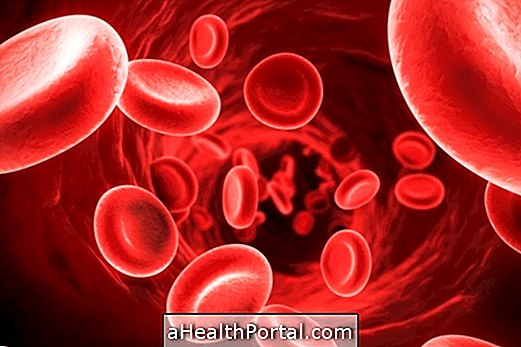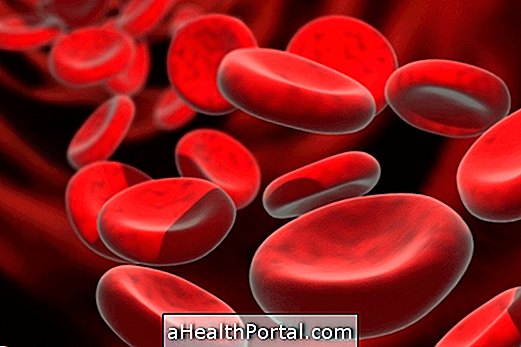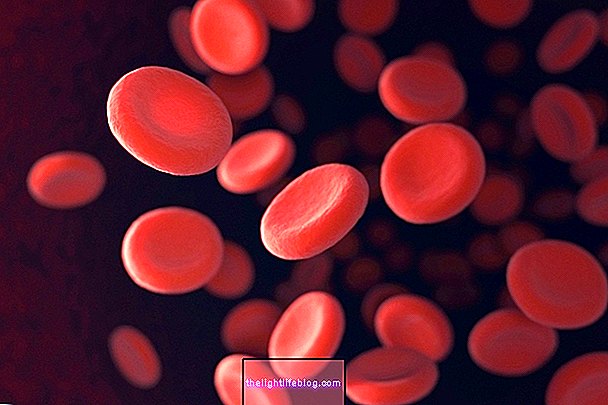Hereditary spherocytosis is a type of anemia caused by the destruction of red blood cells, a hemolytic anemia. It arises due to congenital defects in the membranes of the red blood cells, which end up being smaller and less resistant than usual, and are easily destroyed by the spleen.
Spherocytosis is an inherited disease that accompanies the person from birth; however, it can progress with anemia of variable severity, so in some cases it may not cause symptoms or, in other cases, may cause intense pallor, tiredness, jaundice, enlargement of the spleen and developmental changes.
Although there is no cure, spherocytosis is treated by the hematologist, and folic acid replacement may be indicated and, in the most severe cases that compromise the development or cause many symptoms, the main way to control the disease is to withdraw the spleen by surgery.

What causes spherocytosis
In spherocytosis, a genetic and hereditary change causes changes in the quantity or quality of proteins that form the membranes of the blood red blood cells, popularly known as red blood cells.
Changes in these proteins cause loss of stiffness and protection of the red blood cell membrane, which causes them to become fragile and of a smaller size, even though the contents are the same, forming smaller red blood cells with a rounded aspect and more pigmented.
Anemia arises because the spherocytes, as they are called deformed red blood cells in spherocytosis, are usually destroyed in the spleen, especially when the changes are important and there is loss of flexibility and resistance to pass through the blood microcirculation of this organ.
How to identify
Spherocytosis can be classified as mild, moderate or severe. Thus, people with mild spherocytosis may not present any symptoms, whereas those with moderate to severe spherocytosis may present varying degrees of signs and symptoms such as:
- Persistent anemia;
- Pallor;
- Tiredness and intolerance to physical exercise;
- Increased bilirubin in the blood and jaundice, which is the yellowish coloration of the skin and mucous membranes. Understand what is and what can cause jaundice;
- Formation of gallbladder stones in the gallbladder;
- Increased spleen size.
Check for other signs and symptoms that may indicate different types of anemia.
In order to diagnose hereditary spherocytosis, in addition to the clinical evaluation, the hematologist may request blood tests such as hemogram, reticulocyte count, bilirubin dosage, and peripheral blood smear, which demonstrate changes suggestive of this type of anemia. Also indicated is the osmotic fragility test, which measures the resistance of the red cell membrane.
How is the treatment done?
Hereditary spherocytosis has no cure, however, the hematologist may indicate treatments that may relieve the worsening of the disease and symptoms, depending on the patient's needs. In the case of people who do not have symptoms of the disease, no specific treatment is necessary.
Folic acid replacement is recommended because, due to increased degradation of red blood cells, this substance is most needed for the formation of new cells in the marrow.
The main form of treatment is removal of the spleen by surgery, which is usually indicated in children over 5 or 6 years of age who have severe anemia, such as those with a hemoglobin below 8 mg / dL on the blood count, or below 10 mg / dl if there are important symptoms or complications such as stones in the gallbladder. Surgery can also be done on children who have developmental delays.
People who experience withdrawal of the spleen are more likely to develop certain infections or thrombosis, so vaccines such as anti-pneumococcal and the use of ASA are needed to control blood clotting. Check how surgery is performed for removal of the spleen and the necessary care.





















